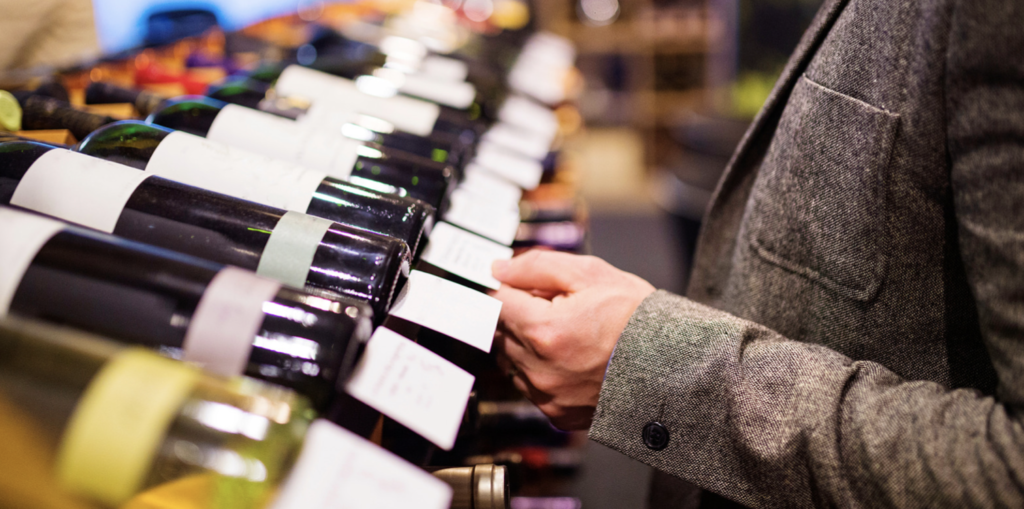Chardonnay vs Chablis – What is the difference between the two?
There is a lot of confusion in the wine world about Chablis. In contrast, people tend to have strong feelings about Chardonnay. Regardless of which side of the chardonnay vs chablis issue you find yourself, Chardonnay is the prized grape of Chablis.

What is the Debate?
Have you ever heard people talk about how much they hate Chardonnay? It comes up pretty frequently when I talk to people about wine. I usually have to stammer and look away for a few seconds before I tell them that Chardonnay is used to make some of the best wines in the world.
What is Chardonnay?
Chardonnay is a grape variety with neutral aromatics that can be grown and ripened easily in many different climates. It is important for emerging wine regions because Chardonnay has international and local demand. Depending on growth location and climate, it can range from high acid to low acid and from green fruit flavors to tropical fruit flavors.

What to look for when buying Chardonnay?
When I buy Chardonnay I am looking for good value and a unique emerging region. For good value, I look to Washington state or Chile. Some interesting new regions for Chardonnay are the Ste. Rita Hills or the Santa Maria Valley in Santa Barbara. I also like to see a Margaret River Chardonnay out of Australia though they usually don’t make it into the United States.
Why are there so many Chardonnay haters?
Chardonnay has a bad reputation because it is a big target. It’s easy to pick on because it’s so popular. To meet the demand for its wild popularity big producers have used winemaking techniques to mask inferior fruit that makes it into the blend.

Are the haters right?
I have tasted many Chardonnays that I find to be boring and simple. Alternatively, I have also tasted countless complex and expressive Chardonnays that reflect the place where they were grown. That expresses terroir. That’s where Chablis comes in.
What is Terroir?
According to Madeline Puckette, terroir is the contribution of climate, soil, terrain, and tradition in the production of wine. The integration of these three agents gives wines their story. They are the language used in the marketing of most wine companies. Sometimes their role can be exaggerated, and sometimes their role can be authentic.
What is Chablis?
Chablis is a wine region in northeastern France. It is also a wine name with Protected Designation of Origin. Its vineyards are classified in a cru system from grand cru, premier cru, and village level. It is the northernmost region of Burgundy. Burgundy has one of the most prestigious reputations for producing wines of high quality and high value.
What is Chablis’s Terroir?
Chablis has chalky soils situated on slopes in a continental climate. By tradition, Chardonnay is the only white grape permitted for production. Oak treatment tends to be reserved for its grand cru and premier cru plantings.
Chablis’s Soil
Chablis’s vineyards are planted on chalk. This chalk gives these wines a flintiness or a natural smokiness, similar to wines from the Sancerre region. Chardonnay, like a blank canvas, picks up the complexity of these soils.
Chablis’s Climate
Chablis has a continental climate. A continental climate has a limited maritime influence. Due to this distance from the ocean, there is a wide difference in temperature in its winter and summer. Continental climates tend to produce wines with high acidity because the harvest is bound by an early winter. The grape has less time to generate sugar.
What about Chablis’s terrain?
The grand cru and premier cru plantings are found on slopes. It’s counter-intuitive but the best grapes for wine comes from vines that are planted on poor soils. The vine needs very little nutrition to survive, and vines planted on fertile soils will grow too vigorously producing diluted fruit. The soils planted on slopes also drain water well preventing the vine’s exposure to mildew and limits the necessity of pesticide use.
Tradition in Chablis
The Chablis region has produced wine for over one thousand years. These wines tend to see limited use of oak. New oak is fairly uncommon. Some premier cru and grand cru wines are fermented in old oak to give exposure to oxygen rather than to obtain the flavors of the barrel.
What am I looking for when I buy Chablis?

I’m looking for value within the confines of the Cru system. All seven of the Grand Cru climates are spectacular and worth a look: Bougros, Les Clos, Grenouilles, Blanchot, Les Preuses, Valmur, and Vaudésir.
The Premier Cru are dependable for quality, and they have not disappointed me. As you get into the village level classification it depends on each producer. Look for recommendations from people you trust. Taste and find out for yourself. Trust your palate.
What should you remember about food and wine pairings?
Everyone has different sensitivities to bitterness, acidity, heat, and sugar. One good way to find out how much bitterness your friends can handle is by asking them how they take their coffee normally. If they take it black then they have a high tolerance for bitterness. If they take it with cream and sugar they have a low tolerance for bitterness.
What else do we want to remember about food and wine pairings?
We drink wine with food for fun. You shouldn’t take it too seriously. I’ve met too many people who frown while they pick out a bottle of wine. That’s not what this is all about. We drink wine when we spend time with the people we love. We also drink wine when we’re meeting new people or old friends. What makes it really special is smiling and enjoying yourself.
Chablis is a low-risk wine in food pairings
I find Chablis to be one of the most versatile wines to use when pairing with food. One of the most common things that happen when we drink wine with food is the wine tastes worse than it would without the food.
As we navigate other people’s and our own sensitivities and preferences to flavors, unoaked wines with little residual sugar usually won’t be rendered out of balance by the food we eat it with.
Which foods pair well with Chablis?

Many types of food will pair well with Chablis, but vegetarian dishes like eggplant parmesan are a noteworthy choice.
Additionally, Chablis is excellent with non-vegetarian dishes, like raw oysters. The minerality of both mirror each other and create a unique experience. I also recommend Chablis with a Shrimp Etouffee. The acidity in the Chablis cleans the palate between bites of the Etouffee. Alternating between the two makes the intensity of the Etouffee new with each bite.

Kevin John O’Neill won his WSET level 3 award in 2018. He was a judge in the 2019 New Orleans International Wine Awards. In addition to his experience developing wine brands, he’s also managed millions of dollars in annual wine and spirits revenue.
